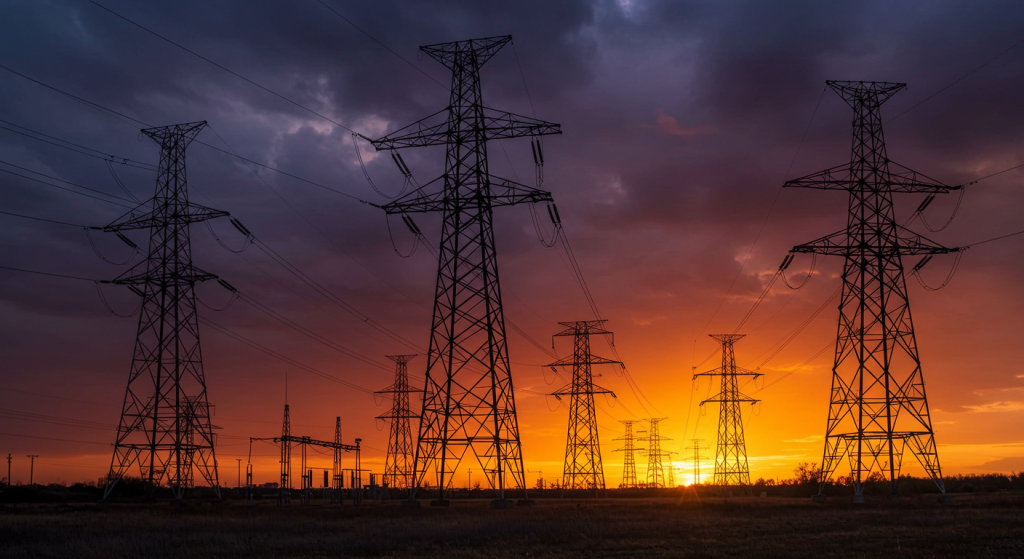Understanding Substation Towers: The Backbone of Our Power Grid
2025-04-25
An Overview of Substation Towers
Substation towers are of utmost importance across the electrical network as they hold all the necessary equipment for the transmission and distribution of electric power. Their construction, as well as their layout operations, enable the smooth, secure functioning of a substation, which is responsible for changing voltage levels and transferring power from generating units to consumers.
Key Functions of Substation Towers
These construction substations are steel frameworks that serve as the electrical gear placed at a substation, which include bus bars, insulators, and other electrical pro devices of utmost importance. Apart from the more colloquial titles, such, these towers are also known as power transmission towers, electrical substation towers, or high voltage substation towers, depending on their utility and their structure.
Substation towers have multiple purposes, including the support of disconnectors, lightning arrestors, insulators, busbars, as well as structural stability for switchgear supports and cable trays. Towers are subjected to high-voltage conditions as well as forces of wind, seismic, thermal expansion, and other factors.
Product Characteristics of Substation Tower:
Some Features May Include:
Custom Design: At the substation level, each fitting has specific layouts, load capacities, as well as other environmental conditions that warrant customization.
High-Quality Materials: Constructed using the best steel available in the market and corrosion-protective paints, which are known to stand the test of time.
Heavy Load Capacity: Supports for high voltage lines and electrical equipment of considerable weight are catered.
Environmental Resilience: Structural components are built with the intention to operate in the harshest of weather and even under severe seismic or operational conditions.
Efficient Installation: Cost efficiency in modular parts, which aid in transportation and on-site assembly, serves the dual purpose of time savings as well.
Safety and Compliance: Regardless of the industry, international safety and quality standards are ensured for constant reliability, which serves the core purpose.
Minimal Maintenance: This reduces cost and machine lash time with low operational requirements throughout the life of the structure.

Components of a Substation Tower
Substation towers provide support for the different electric units that are necessary for maintaining the balance of an electric grid system. They include:
Busbars
Busbars are used for the metallic conductors that link the bus section with other sections of the substation. These are usually mounted on special towers built for this purpose.
Insulators
Insulators hold high-voltage conductors at a distance from all other conductive parts capable of making contact and require substation towers to anchor these parts. Ensuring the protection of the whole electrical setup at the substation.
Disconnectors
This device serves the purpose of separating all or parts of the power system for other routine tasks done for service orders within the subsystem. These are very frequently placed on towers built adjacent to substations.
Lightning Arrestors
These devices shield the equipment of the Substation from high-voltage, dangerous electric waves when a lightning strike hits an area nearby. These devices need reliable anchorage structures for adequate protection. Substation towers serve this purpose.
Cable Support Structures
Cables that form the parts of the substation and aid in the distribution of power are also mounted on these towers.
Framework for Substation Tower Design
Each steel lattice tower for substations forms an integral part of an electrical system, which makes its design a complicated affair. Important highlights to keep in mind are:
• Structural Integrity: The design must consider the inward loads arising from various electrical equipment and the external forces like wind/earthquake on the substation.
• Material Selection: The material used for the construction of towers should be galvanized steel, as it meets the required strength and corrosion resistance.
• Tower Height: The height of the substation tower is also dependent on the voltage level and the equipment it supports.
• Safety Regulations: Any system used must incorporate proper safety measures, like a grounding system, to avoid an electrical hazard.
For further inquiries regarding the design of substation towers, feel free to navigate to XY Tower, where comprehensive information regarding tower construction and design is provided.
Maintenance and Inspection of Substation Towers
Maintenance and inspection of the towers in the substation should be done regularly to make sure that the operational safety of the electric grid is not compromised. Amongst the most vital ones are:
• Structural Inspections: Towers are also subjected to periodic inspections with regard to caustic corrosion, structural damage, and general wear and tear. Any disputes about the balance of the tower must be corrected immediately.
• Electrical Equipment Inspections: The devices accommodating the towers, like busbars and insulators, require periodic inspection for operation and visible damage.
• Grounding Systems: Maintenance of grounding systems is essential to mitigate an electrical fault and shield the devices from lightning strikes.
Best Practices for Substation Tower Maintenance
Carry out periodic inspections and evaluations to identify problems at an earlier stage, which are easier to deal with.
Comply with industry standards and relevant frameworks during substation tower maintenance.
Employ modern technologies that are available for structural analyses in examining the stability of the tower in order to identify potential points of failure.
A substation tower is always maintained by technicians who are trained to deal with the complexities of high-voltage substations.
Cost of Substation Tower Construction
The costs incurred in the construction of the substation towers are not fixed because they depend on the kind of substation, the materials selected, and the sophistication of the work. For example, the construction of steel lattice towers for substations is usually associated with higher initial costs due to the materials and engineering required. Nevertheless, the strength and useful life of these towers render them economically reasonable in the long run.
Factors that influence pricing include:
Material Expenses: The incorporation of galvanized steel and other materials of superior quality can greatly impact the expense as a whole.
Wages: The design, construction, and installation of substation towers require the services of proficient workers, thus raising the cost.
Other costs: The region, along with the geographical setting, may also impact the selection of the materials to be used, as well as the timeline for the construction.
For precision in estimating your unique requirements, engagements with specialists would be beneficial in obtaining reliable estimates for detailed cost breakdowns on substation tower building.
Conclusion
Substation towers are critical components in a power transmission system as they aid in providing support as well as the mounting of various important electrical components. Our towers are best maintained through the use of quality materials, strong design frameworks, and regular upkeep, thus optimizing performance for decades. For more information on substation towers, visit us at XY Tower and allow our specialists to offer you reliable strategies on the design and construction of substations tailored to withstand harsh conditions while retaining superb quality.

Hey, I’m Chunjian Shu
"X.Y. Tower: Reliable, innovative solutions for high-quality towers and electrical equipment with professional service.
